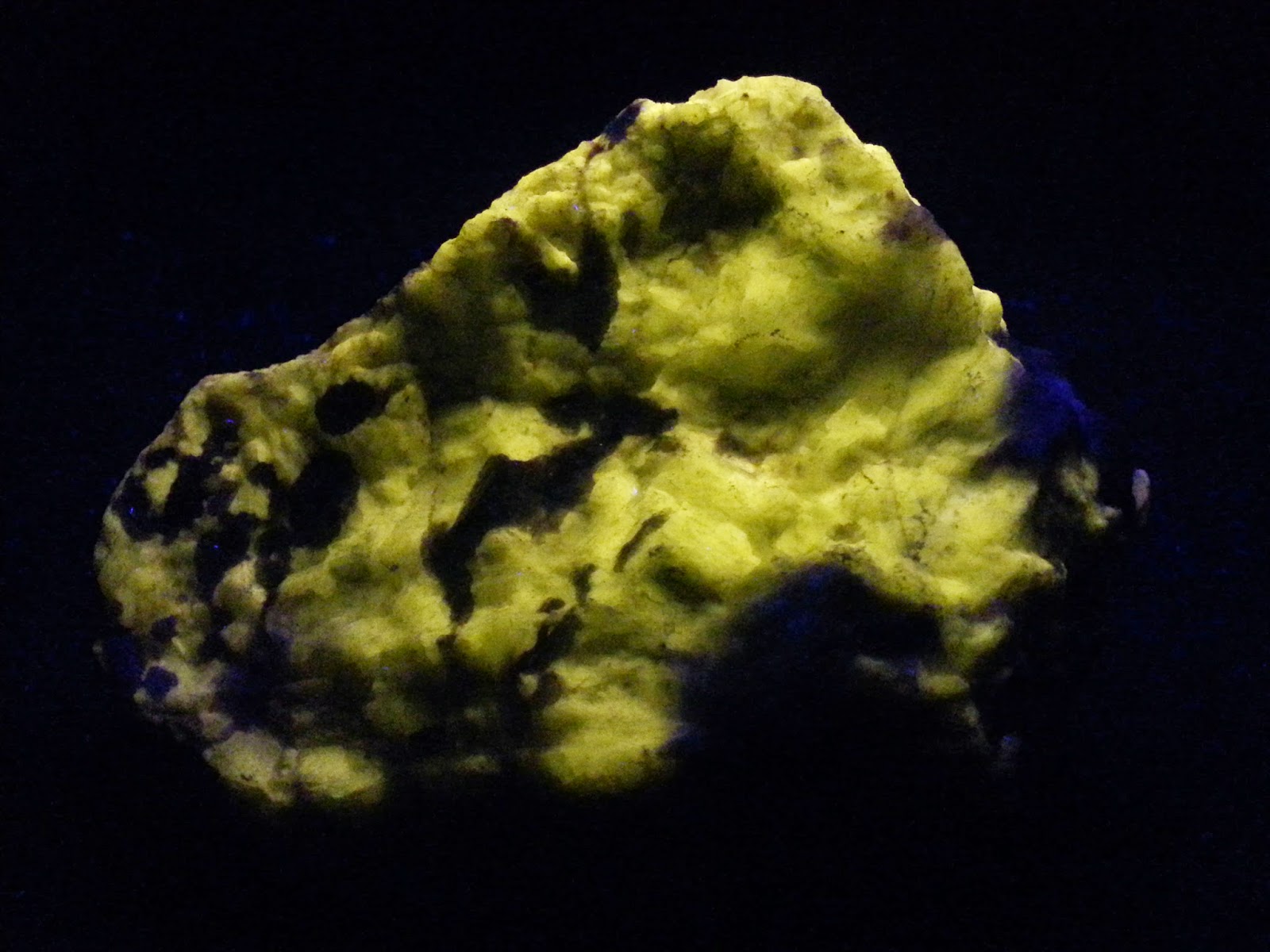Fluorescent Minerals
Fluorescent chalcedony from Guernsey, WY. Chalcedony takes a variety of forms, and the species from this locale is referred to as "youngite." SWUV. 3"x2"x1.5"
The druzy coating of fine quartz crystals over the chalcedony is a defining characteristic.
Fluorescent green veins of chalcedony in white magnesite. SWUV. 3"x2"x1.5"
Same under white light. (Yavapai County)
Sample courtesy of Polman Minerals.
This specimen is from a new find in the Santa Catalina mountain range. (Pima County)
Both the marble-like outer layer and inner teal colored layer fluoresce a mix of green and blue under SWUV. These minerals are yet to be identified. 4.5"x3"x2"



























